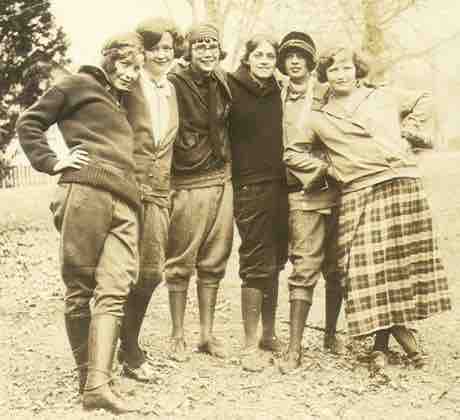The Roaring Twenties was a decade with a distinct cultural edge in which ideas about morality and social roles shifted as much as the booming economy. Young women in the 1920s took part in a liberation of sexuality and education that redefined their generation, while minority groups such as African-Americans and homosexuals began to emerge from the shadows of traditional American culture.
Changes for Women
Many of the ideas that fueled the change in sexual thought were already floating around intellectual circles in New York prior to World War I through the writings of psychoanalyst Sigmund Freud, physician and social reformer Havelock Ellis, and feminist Ellen Key. These thinkers asserted that sex was not only central to the human experience, but that women were sexual beings with human impulses and desires just like men, and that restraining these impulses was self-destructive. By the 1920s, these ideas had filtered into the mainstream of society, although not without resistance from traditional standard bearers such as conservative religious leaders and politicians.
The 1920s saw the emergence of the co-ed, short for co-educational, meaning women who began bucking gender stereotypes by attending large state colleges and universities alongside men. And while these women entered into the mainstream middle-class experience, including higher education, they largely remained in gendered roles within society. At school, women typically took classes such as Home Economics, referring to the study of skills and tasks employed in the successful operation of a home including cooking, sewing and cleaning. Other courses of the time had titles like, "Husband and Wife," "Motherhood," and "The Family as an Economic Unit." In an increasingly conservative postwar era, it was common for a young woman to attend college with the intention of finding a suitable husband.
Fueled by ideas of sexual liberation, however, dating underwent major changes on college campuses. With the advent of the automobile, courtship occurred in much more private settings than it had among previous generations. "Petting," or sexual relations without intercourse, became the social norm for college students.

Teenagers, May 1924
The societal expectations and allowances for young women changed dramatically in the 1920s.
Changes for Minorities
Another significant change in the overall behavior of American society began in urban areas, where minorities were treated with more equality in the 1920s than they had been accustomed to previously. This was reflected in some of the films of the decade, as well. Redskin (1929) and Son of the Gods (1929) dealt sympathetically with Native Americans and Asian Americans, respectively, by rejecting social bias. In movies and on the stage, black and white players appeared together for the first time, while it became common in nightclubs to see whites and blacks dancing and dining together.
The 1920s was also a period of more visibility, and somewhat more acceptance, for homosexuals. New York, London, Paris, and Berlin were important centers of the new ethic, and humor was used to assist its acceptability. One popular American song, "Masculine Women, Feminine Men," was released in 1926 and recorded by numerous artists of the day.
The relative liberalism toward homosexuality was publicly demonstrated by the actor William Haines, regularly named in newspapers and magazines as the top male box-office draw, who lived in an openly gay relationship with his partner, Jimmie Shields. Other popular gay actors and actresses of the decade included Alla Nazimova and Ramón Novarro. In 1927, movie and stage star Mae West wrote a play about homosexuality called, "The Drag," which became a box-office success. West regarded talking about sex as a basic issue of human rights and was an early advocate of gay rights.
Mae West
Screen, stage and radio megastar Mae West was a vocal proponent of sexual openness and gay rights.
Profound hostility to homosexuality continued to exist, however, especially in more remote areas. With the return of a conservative mood in the 1930s, the public once again grew intolerant of homosexuality, and gay actors were forced to choose between retiring or agreeing to hide their sexuality, even in the relatively liberal safe haven of Hollywood.